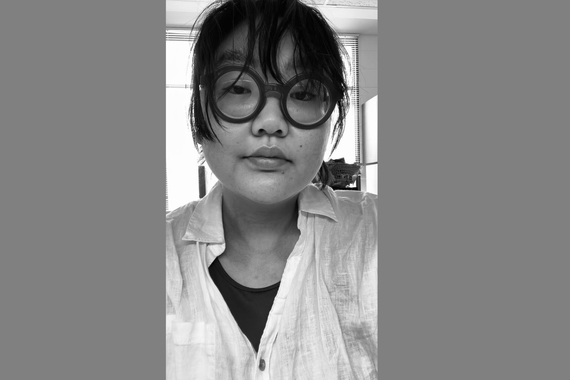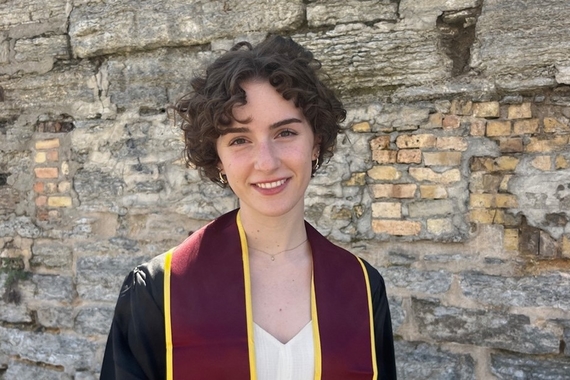On Purpose: Portrait of Art History
To commemorate our 150th anniversary in 2018, the College of Liberal Arts commissioned 60 photographs taken by Xavier Tavera. Departments and programs partnered with Tavera to envision their images and to write the narratives that accompany each photograph. View On Purpose: Portrait of the Liberal Arts.

Contemporary artist Xavier Tavera practices what French philosopher Roland Barthes called “the impossible science of the unique being.”¹ He invites his subjects to stand or sit, talks to them, is curious about who they are and what they do. He coaxes a glance, elicits a gesture, waits for them to settle into position. Describing the strange and estranging experience of being photographed, Barthes writes, “I decide to ‘let drift’ over my lips and in my eyes a faint smile which I mean to be ‘indefinable,’ in which I might suggest, along with the qualities of my nature, my amused consciousness of the whole photographic ritual.”¹ Tavera works with, rather than against, his sitters’ self-awareness and invites their decisions, all the better to stage their own invention of themselves before the camera.
Here two women (two Marys)—Marilyn Chiat (BA ‘69, MA ‘72, PhD ‘79) and Mary Lodu (BA ‘16)—sit together on a glistening tufted leather couch. Mary occupies the seat, her penetrating gaze level with that of the camera. Her perfect smile is set against her lovely dark complexion and long black braids. She balances, clasping her hands around a bent knee, her laced fingers seeming disproportionately large as they project outward, threatening to break the picture plane. The brown Oxford shoe on her right foot points downward, as though anchoring her to the raw wood floor. Marilyn, smaller and more doll-like in her ballet flats, perches above on the rolled arm of the couch in a salt-and-pepper tweed skirt and black tights, one ankle twined tensely around the other. Her hands lie neatly in her lap, her dignified bearing and serious expression betrayed somewhat by the slightly splayed pinky on her left hand. The contours of Marilyn’s short hair are nearly lost against the white backdrop behind her, into which she might disappear like a ghost, were it not for the dark round glasses that tie her in place like large twin black buttons.
The two figures, though calmly smiling, indicate an unease, a self-consciousness that Tavera intentionally and quite literally highlights with the glossy surface of the image, the sheen of the couch, the shimmer on Mary’s cheeks. It’s not just that they are strangers meeting here for the first time—one older and one younger, one European- and one African-American. They also represent different generations of art historians with divergent research interests (the ancient world and the contemporary). Awkwardly, Mary’s senior thesis, on a 1970s black feminist art group in the US, looks historiographically upon the very decade in which Marilyn wrote her dissertation, a work examining synagogue art and architecture in Roman and Byzantine Palestine.
In 1868, when the College of Liberal Arts was founded, the art of photography was in its infancy. It has been, since its inception and here in this image, confoundingly both a device of the contemporary (the shutter clicks always on the now) and a tool of the past (the image’s curious antiquity to be inspected at some point in the future). Even the space where these patient sitters pose manifests this temporal imbrication. The Soap Factory, now a contemporary art gallery in Minneapolis, was formerly the National Purity Soap Company building, erected in 1924 when no one would have known that its industrial brick structure and wood-plank floors would one day offer an edgy setting for experimental art.
The factory was built five years before students began majoring in art history at the University of Minnesota, when the young architectural historian Everard Upjohn (1904-1978) joined the faculty as an assistant professor in 1929 and founded the Department of Fine Arts. From its beginnings in the Great Depression to the embattled and precarious status of the humanities in the present day, the Department of Art History has offered students a place to reflect upon the wondrous human impulse to create art.


